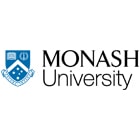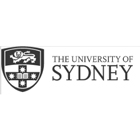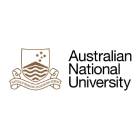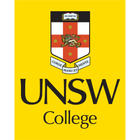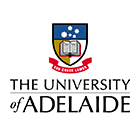- News and articles
- Events
- Find usIDP AustraliaIDP BahrainIDP BangladeshIDP CambodiaIDP CanadaIDP ChinaIDP EgyptIDP GhanaIDP Hong KongIDP IndiaIDP IndonesiaIDP IranIDP JordanIDP KenyaIDP KoreaIDP KuwaitIDP LebanonIDP MalaysiaIDP MauritiusIDP Middle EastIDP New ZealandIDP NigeriaIDP OmanIDP PakistanIDP PhilippinesIDP Saudi ArabiaIDP SingaporeIDP Sri LankaIDP Taiwan, ChinaIDP ThailandIDP TurkeyIDP UAEIDP VietnamIDP Corporate
- Social
- English
The Ultimate Guide for Nepalese Students Planning to Study in Australia
Australia remains a top destination for Nepalese students seeking high-quality education, offering diverse courses across fields like business, engineering, humanities, and language studies. With over 22,000 programs at 1,100 universities and institutions, students can earn globally recognised degrees while benefiting from a vibrant, supportive environment. The country's strong academic reputation, excellent living standards, and extensive post-study work opportunities make it an ideal choice for those looking to advance their careers. Additionally, Australia provides numerous scholarships, making world-class education more accessible.
Why study in Australia?
Student-friendly cities According to the QS Best Student Cities 2025, 6 of the top 50 student cities are in Australia.*
Post-study work rights: Australia offer up to 6 years of post-study work rights
World-recognised universities: Australia is known for its good quality education. According to the QS World University Rankings 2025, 9 of the top 100 universities are in Australia.*
Internationally recognised degrees: Australian degrees are renowned worldwide.
Part-time Work: You can work part-time up to 48 hours per fortnight in Australia
Student visa requirements to study in Australia
The visa you need will depend on the course level, the type of study you want to pursue, the duration of the program, and study in Australia. As an international student, you would require a student (subclass 500) visa, regardless of your field of study, the university you applied to, and the tuition fees.
A student subclass 500 visa lets you stay in Australia for the duration of your study program, which is mostly up to five years and in line with your enrolment date. For a smooth stay, you need to ensure that your visa remains valid and that you abide by the student visa conditions mentioned on your student visa. You can read up in detail about this kind of visa on the Australian Government’s Department of Home Affairs website.
Read more about Australia Student Visa
Cost of studying in Australia for International Students
Your expenditure on tuition fees to study in Australia depends on the type of qualification and the university or school you opt for. For instance, veterinary and medical degrees cost substantially more than other degrees. The average tuition fees at one of Australia’s tertiary institutions range between AUD 20,000 and AUD 30,000 a year.
S.no. | Study Program | Average fees in AUD* |
1. | School | AUD 7,800 to AUD 30,000 annually |
2. | English language studies | AUD 350-450 weekly (varies as per course length) |
3. | Vocational Education and Training (Certificates I to IV, Diploma and Advanced Diploma) | AUD 4000 - AUD 22,000 annually |
4. | Undergraduate Bachelor’s degree | AUD 15,000 - AUD 35,000 annually |
5. | Postgraduate Master’s Degree | AUD 20,000 - AUD 42,000 annually |
6. | Doctoral Degree | AUD 20,000 - AUD 42,000 annually (attractive scholarships up to 100% available with living grants on meeting the university requirements) |
*Please note all figures are indicative
Most commonly, courses in humanities, arts, and education are a little cheaper, while subjects such as medicine and engineering are likely to be more expensive. If you wish to study at a postgraduate level, the tuition fee is typically higher, and the costs vary depending on the program
Scholarships for Nepalese students to study in Australia
Here are some popular scholarship programs you can apply to study in Australia as a Nepalese student:
S.no. | Scholarship | Description |
1 | Australia Awards | This includes scholarships coming from the Department of Education the Australian Centre for International Agricultural Research (ACIAR) and the Department of Foreign Affairs (DFAT). |
2 | Australia APEC Women in Research Fellowship | These fellowships were started with the aim of empowering women and are open to high-achieving female researchers from the Asia-Pacific Economic Cooperation (APEC) to pursue their research in Australian education and research institutions. |
3 | Australian Government Research and Training Program (RTP) | This pool of funding is dedicated to supporting a student’s (local and international) Research Doctorate and Research Master’s degree. |
*This is an indicative list, speak with your IDP expert for details and the best available options suited to your profile
Read more about Scholarships to study in Australia
Intakes in Australia
Unlike a single intake in Nepalese universities, Australian colleges and universities offer two major intakes. In some universities, intakes may also be referred to as a semester. The two intakes available in Australia are:
Semester 1: Starts late February/early March to late May/early June
Semester 2: Starts late July/early August through to November
IELTS for studying in Australia
To study at an Australian university, aspiring students must meet specific IELTS test score requirements. For advanced studies, a minimum overall score of 5.5 is needed. However, for postgraduate programs, a more stringent requirement is in place, necessitating a minimum IELTS band score of 6.5 in all four sections (Listening, Reading, Writing, and Speaking), while undergraduate options require a 6.0 overall score. These score requirements are crucial considerations when applying for an Australian student visa.
Top courses to Study in Australia
Here’s a list of top courses that international students opt to pursue in Australia for higher education:
Engineering
Business Analytics
MBA (Masters of Business Administration)
Life Sciences
Artificial Intelligence (AI)
Social Sciences
Medicine
Top Universities to Study in Australia
When deciding which university to study at, it is crucial that you also look at the world university rankings.
Universities | QS Rankings 2025 |
The University of Melbourne | 13 |
The University of Sydney | 18 |
The University of New South Wales (UNSW Sydney) | 19 |
Australian National University (ANU) | 30 |
Monash University | 37 |
The University of Queensland | 40 |
The University of Western Australia | 77 |
The University of Adelaide | 82 |
University of Technology Sydney | 88 |
RMIT University | 123 |
*Source: https://www.topuniversities.com/world-university-rankings?countries=au
Job prospects in Australia
Australia offers strong job prospects for international students and graduates, with demand increasing in sectors like healthcare, information technology, engineering, and education. The unemployment rate in 2024 remains relatively low at 3.6%, reflecting a stable labour market. Critical skill shortages have been identified in fields such as nursing, software development, civil engineering, and teaching, making these areas particularly attractive for graduates seeking long-term opportunities. The Temporary Graduate Visa (subclass 485) allows international students to stay and work in Australia post-graduation.
Employment options:
On-campus
Retail
Hospitality
Tutoring
Office jobs
Freelance
Miscellaneous
Volunteering
Cost of living in Australia
Australia is ranked among the top 10 nations*, which implies Australia is counted in the top countries in terms of GDP, education system, and purchasing power parity index. So, along with the high level of income, it enjoys an excellent quality of health awareness, the medical system, and political stability. So, excited?
You should also consider these common expenses when creating your budget:
Expense Category | Weekly Budget (AUD) |
Groceries and Eating Out | AUD 140 to AUD 300 |
Gas and Electricity | AUD 15 to AUD 25 |
Phone and Internet | AUD 20 to AUD 35 |
Public Transport | AUD 35 to AUD 65 |
Car (after purchase) | AUD 160 to AUD 270 |
Entertainment | AUD 80 to AUD 160 |
*Source: https://costofliving.studyaustralia.gov.au/
Know more about Cost of livining
Frequently Asked Questions (FAQs)
We know you have a lot of questions in your mind, so have answered common questions students as you raise about studying and living in the Australia from Nepal.
Ques 1: How much proof of funds is required to study in Australia?
Ans: Students applying for a visa must prove that they have at least AUD 24,505 in savings to cover their living expenses for one year.
Ques 2: Who is eligible to sponsor me for studying in Australia?
Ans: Unless you are entirely self-sponsoring, your visa application can be sponsored by your parents, legal guardians, or spouse. In this context, sponsorship relates to the individuals responsible for funding your travel, educational expenditures, and associated financial requirements while you pursue your studies in Australia.
Ques 3: What is the maximum age limit for a student visa in Australia?
Ans: To apply for an Australian student visa from Nepal, you must be at least 18 years old. There is no upper age limit for student visas in Australia. The conditions of the Subclass 500 student visa in Australia do not apply to those under 18 years old.
Ques 4: How much will it cost to study in Australia?
Ans: On average, tuition fees to study in Australia at Australian tertiary institutions typically fall within the range of AUD 20,000 to AUD 30,000 per year.
Explore in Australia
Hover over the city cards to discover more!

Send funds securely with money transfer
Explore safe, convenient and fast payment solutions with our market leading partners.

Find your home away from home
We’ll help you discover student accommodation that makes you feel comfortable and at home, no matter where you are.

Get your finances sorted with student banking
Set up your bank account before you arrive and secure your finances abroad.
Cost of living calculator
Estimate how much you will need to cover your expenses including cost of living comparison for various country and accommodation options.
Can’t decide where to study?
Answer 5 quick questions to get personalised content and course recommendations







